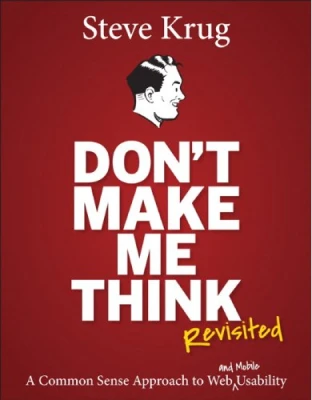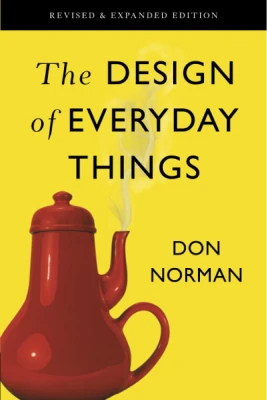Must-read UX books

After 9 years since my last post on my previous blog, LisbonLab, I have decided to get back to writing. For this first post, I will share my thoughts about three of my all-time favorite books on User Experience. These 3 books have been very significant in my path in this area.
“The Elements of User Experience” by Jesse James Garrett
 “The Elements of User Experience” by Jesse James Garrett
“The Elements of User Experience” by Jesse James Garrett
Many, many years ago one of my friends lent me "The Elements of User Experience" by Jesse James Garrett. It was a significant milestone on my journey. This book inspired me to become a professional in User Experience.
“The Elements of User Experience” had a first edition published in 2002 and a second, updated edition in 2010. The book presents an overview of the key elements of user experience design, including information architecture, navigation, content, and interface design.
The user experience design model is the main concept of this book. This model has five layers: Strategy, Scope, Structure, Skeleton, and Surface. In a future post, after I finish reading the book again, I plan to explain all 5 layers.
Whether you are a designer, a developer, a product owner, a product manager, or just interested in the field "The Elements of User Experience" is definitely one must-read book. The book provides valuable insights and guidance that will help you design better user-centered experiences.
“Don't Make Me Think” by Steve Krug
 “Don't make me think” book cover, by Steve Krug
“Don't make me think” book cover, by Steve Krug
“Don’t make me think” by Steve Krug is another classic in the field of user experience design and has become a must-read for anyone interested in designing websites and software applications that are both usable and user-friendly.
The book emphasizes the importance of creating websites and applications that are intuitive, simple, and straightforward. Users don't need to think about how to use our websites or applications, according to the book.
"Don’t make me think" is a very easy book to read and understand thanks to the simple, concise, and sometimes humorous way in which Steve Krug presents his ideas. The book addresses various User Experience Design topics such as Web Psychology, Information Architecture, Usability or Web Content Design.
“The Design of Everyday Things” by Don Norman
 “The Design of Everyday Things” by Don Norman
“The Design of Everyday Things” by Don Norman
Last but not least, there is another classic in the field of human-centered design and usability by Don Norman, "The Design of Everyday Things". The book was first published in 1988. In 2013, it received a revised and expanded edition. However, Don Norman's book remains widely read and referenced after all these years.
The book covers how the design of everyday objects affects the user experience. Some of the examples given by Don Norman include door handles, light switches, and electronic devices. Sometimes using a door is not as simple as it should be due to the poor design of the handles. Don Norman argues that good design should be intuitive and understandable and that poorly designed products create frustration and confusion.
"The Design of Everyday Things" is essential reading for anyone involved in the design of physical products or digital interfaces.
Here are my top 3 must-read UX books. What books are on your must-read UX books list?
Featured photo by Karl Solano on Unsplash.